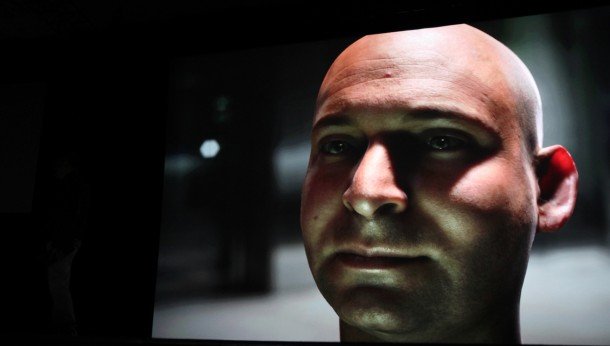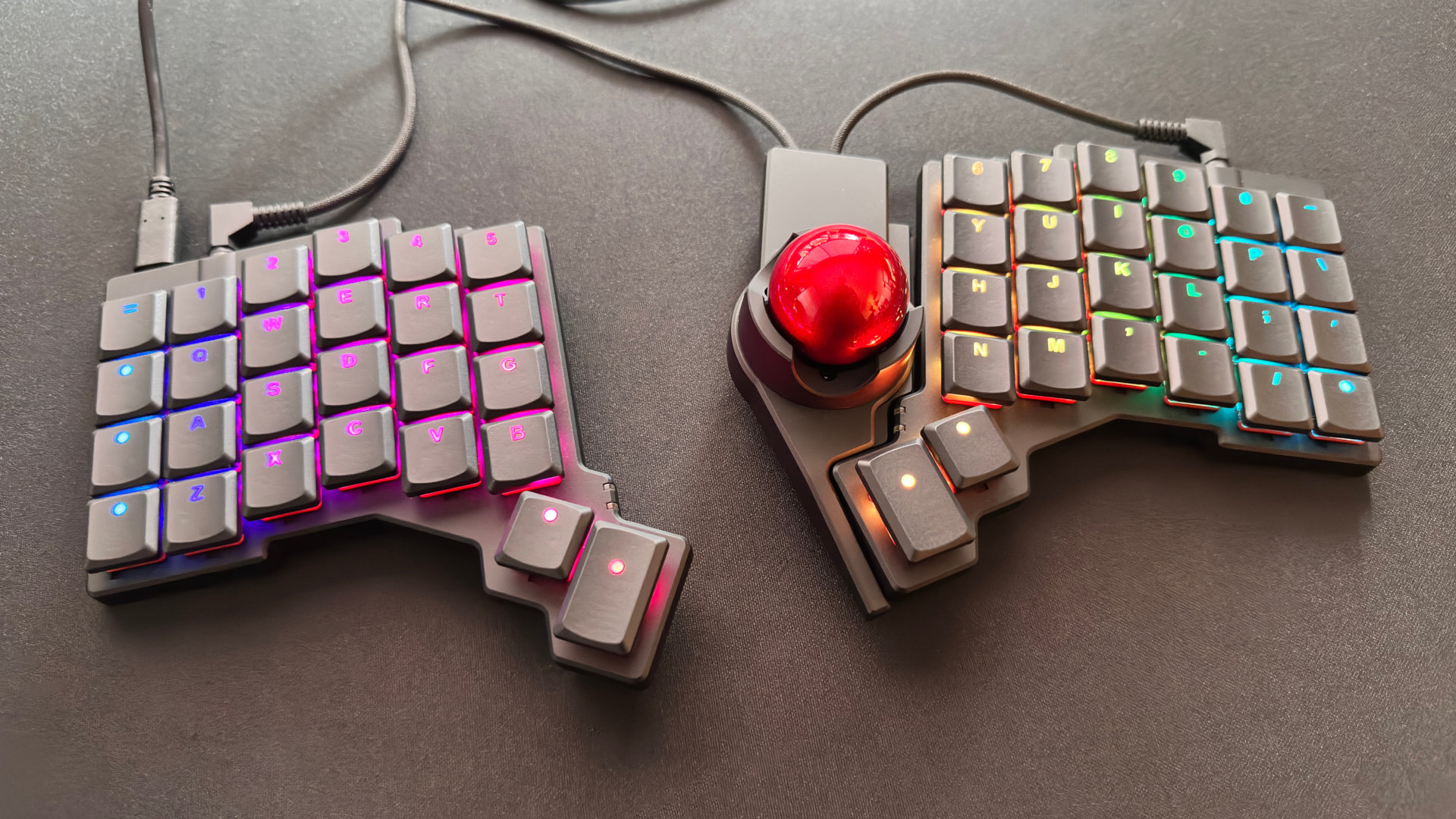Nvidia unveils Face Works - video capture tech accurate to a tenth of a millimetre

It seems like you can't claim to be in the business of next-gen technology these days until you've wheeled out a giant floating man-face. David Cage summoned the disembodied head of Max von Sydow to boggle over the stage at the PS4 reveal, and now, not to be out-done, Nvidia have revealed their own real-time face-o-tech at their GPU Technology Conference in California.
Aiming to help us clamber up the other side of the uncanny valley, Face Works uses a face and motion capture technology developed at the University of Southern California's Institute of Creative Technology (ICT). The Light Stage technology is able to capture data to within a tenth of a millimetre using photographic techniques that capture the geometry of an actor's face as well as the light transmission through human skin and the reflections that come from the oils too.
As well as the still images the Light Stage then uses video capturing to grab around thirty different facial expressions from the actor involved. Once all that information is captured it's then compressed down to a set of meshes that can be used to recreate and animate a digitised version of that face.
Nvidia have worked with the ICT and managed to get this compressed data down from the 32GB it is in its raw form to around 400MB. At that size it is now possible to do the animation in real time and that is exactly what Jen-Hsun Huang has going on behind him on stage in the video below.
Running on a single GTX Titan the digital Ira character gurns away on the big screen. The facial expressions flow together pretty well and the geometry of the face looks incredible, as you can see from the video.
There's still a whiff of the uncanny about it, I think - the glassy eyes being the giveaway. But this Face Works tech is definitely a step forward. Not that it's one the mass-market will be making imminently: the demo is running the GTX Titan pretty hard, demanding around 2TFLOPS of processing power, around half the possible performance of the ultra-enthusiast GPU. That's going to make it very difficult to get this sort of tech running in real-time in an actual game, but pared-down versions could eventually make an appearance on CUDA-enabled GPUs.
It's perhaps telling that the Face works tech is being demoed using a bald man - matching it with some proper follicle rendering technology would likely bring even the GTX Titan to its knees.
Keep up to date with the most important stories and the best deals, as picked by the PC Gamer team.

Dave has been gaming since the days of Zaxxon and Lady Bug on the Colecovision, and code books for the Commodore Vic 20 (Death Race 2000!). He built his first gaming PC at the tender age of 16, and finally finished bug-fixing the Cyrix-based system around a year later. When he dropped it out of the window. He first started writing for Official PlayStation Magazine and Xbox World many decades ago, then moved onto PC Format full-time, then PC Gamer, TechRadar, and T3 among others. Now he's back, writing about the nightmarish graphics card market, CPUs with more cores than sense, gaming laptops hotter than the sun, and SSDs more capacious than a Cybertruck.


